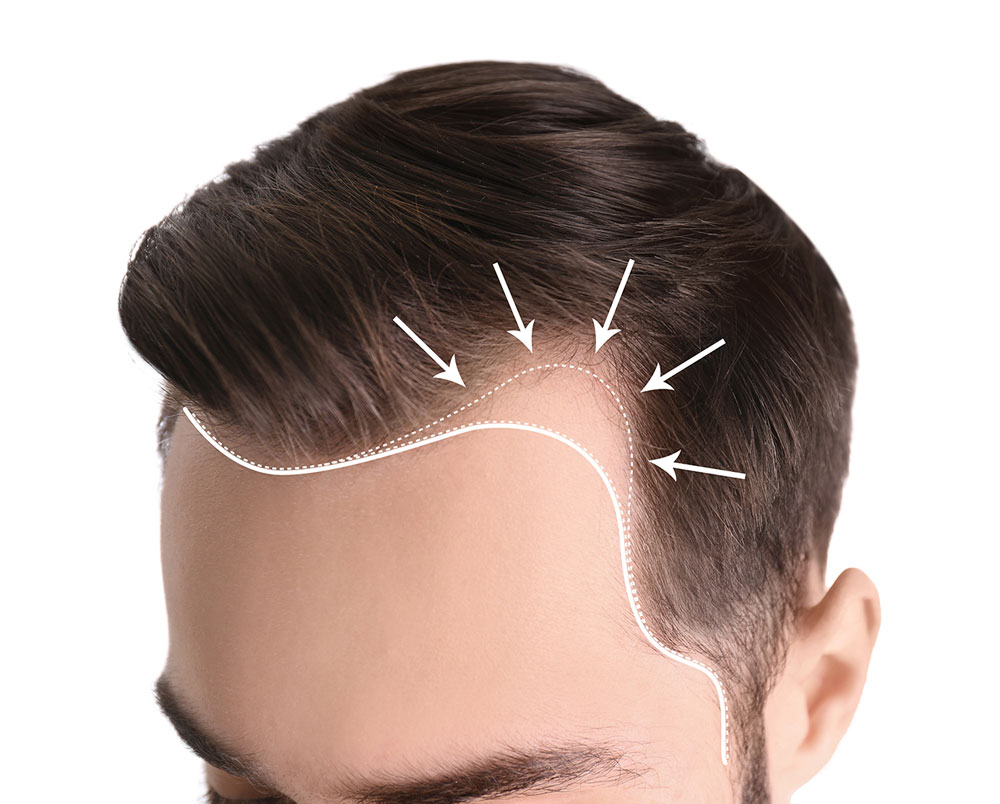🌿 Hair Transplant in Turkey
Regain Your Hair, Restore Your Confidence
Hair loss affects millions of men and women worldwide, impacting confidence, appearance, and self-esteem. If you’re struggling with bald spots, a receding hairline, or thinning hair, hair transplant surgery in Turkey offers a safe, natural, and affordable solution.
At Health in Turkey, we work with renowned hair transplant clinics and surgeons to provide you with world-class treatment in state-of-the-art facilities — at a fraction of the cost you’d pay in North America.

🧬 What Is a Hair Transplant?
A hair transplant is a minimally invasive surgical procedure that relocates healthy hair follicles from a donor area (usually the back or sides of the scalp) to balding or thinning areas. The goal is to create natural-looking, permanent hair growth.
Common Hair Transplant Techniques:
FUE (Follicular Unit Extraction)
Individual follicles are harvested and transplanted with minimal scarring.
✅ Fast recovery, ideal for precision hairline restoration.DHI (Direct Hair Implantation)
A more advanced version of FUE using a Choi pen for direct implantation.
✅ No incisions, denser placement, and faster healing.FUT (Follicular Unit Transplantation) (less common in Turkey)
A strip of scalp is removed and dissected into grafts.
✅ Suitable for large areas but leaves a linear scar.
🔍 Procedure Overview
| Aspect | Details |
|---|---|
| Procedure Duration | 4–8 hours |
| Anesthesia | Local |
| Hospital Stay | Not required (outpatient) |
| Scarring | Minimal (none visible with FUE) |
| Return to Work | 3–7 days |
| Final Results | 9–12 months |
💰 Hair Transplant Cost in Turkey
| Type | Estimated Cost (CAD) |
|---|---|
| FUE Hair Transplant | $2,000 – $3,200 |
| DHI Hair Transplant | $2,800 – $4,000 |
| Beard or Eyebrow Transplant | $1,800 – $2,500 |
✅ Packages may include:
Hair transplant (up to 5,000 grafts)
3–4 star hotel accommodation
Airport & clinic transfers
Translator support
Post-op medications and shampoo kits
✅ Benefits of a Hair Transplant
Permanent solution to hair loss
Natural-looking results
Boosts confidence and self-image
Low maintenance after healing
Short downtime, minimally invasive procedure
👤 Who Is a Good Candidate?
You may be an ideal candidate if you:
Have stable hair loss (not rapidly progressing)
Have a healthy donor area
Are in good health
Have realistic expectations about results
Are male or female dealing with pattern baldness
- People with male or female pattern baldness (androgenetic alopecia).
- Individuals with hair loss due to scarring from injuries or burns.
- Those with thinning hair but adequate donor hair are available in other areas of the scalp.
- Healthy individuals with realistic expectations of the results.
Hair Transplantation Techniques
- Follicular Unit Transplantation (FUT): A strip of skin with hair is removed from the donor site, and individual hair follicles are transplanted.
- Follicular Unit Extraction (FUE): Individual follicles are extracted directly from the donor area and transplanted, leaving no linear scar.
The Stages of Hair Transplant
- Determination of the Hairline: The surgeon designs a natural-looking hairline to complement the patient’s facial features.
- Extracting Hair with the FUE Technique: Hair follicles are extracted individually from the donor area, ensuring the integrity of the grafts.
- Channel Opening: The surgeon makes tiny incisions in the recipient area, preparing the scalp for hair implantation. The channels are opened at the correct angle and direction to mimic natural hair growth.
- Hair Transplantation: The extracted follicles are transplanted into the recipient area, ensuring an even and natural hair distribution.
Precautions Before Hair Transplantation
- Avoid smoking and alcohol for at least a week before surgery.
- Stop blood-thinning medications or supplements, as directed by your doctor.
- Keep the scalp clean and free from infections before the procedure.
During Operation
- Natural Hairline Design: A carefully planned hairline that suits the patient’s features is crucial for achieving natural results.
- Grafts Extraction: Precision is critical during the extraction to protect the hair follicles.
- Channel Opening: Small, well-angled incisions are made to ensure that the transplanted hair grows naturally.
After Operation
- First Night After Surgery:
- Keep your head elevated to reduce swelling and avoid touching the transplant area.
- Aftercare Products:
- Use recommended shampoos and ointments to aid in healing and protect the newly transplanted hair follicles.
📅 Recovery Timeline
| Timeline | What to Expect |
|---|---|
| Day 1–3 | Mild swelling & soreness |
| Day 4–7 | Scabbing begins to fall off |
| Week 2–4 | Shedding of transplanted hairs (normal) |
| Month 2–3 | New hair growth begins |
| Month 6–9 | Noticeable density & growth |
| Month 12+ | Final results visible |
🌍 Why Choose Turkey for Hair Transplants?
🌟 Top-tier clinics with experienced specialists
💸 Up to 70% cheaper than Canada or the U.S.
🌐 English-speaking staff and international standards
🏥 Over 500,000 successful procedures yearly
🧳 Enjoy medical tourism in Istanbul, Antalya, and more
📞 Contact Us for Your Free Hair Assessment
Want to know how many grafts you need or which method is best for you? Get a free online consultation with Health in Turkey and receive a customized treatment plan with pricing, accommodation, and travel options.
🌐 Visit: www.healthinturkey.ca
📧 Email: info@healthinturkey.ca
📱 WhatsApp: +1-519-494-3673
Frequently Asked Questions About Hair Transplants
Hair transplantation is a surgical procedure where hair follicles are moved from a donor area (usually the back or sides of the scalp) to areas experiencing hair thinning or baldness. This helps restore hair growth in balding areas, typically on the scalp.
Good candidates include:
- Individuals with male or female pattern baldness (androgenetic alopecia).
- Those with thinning hair or hair loss due to injuries or scars.
- Patients with sufficient donor hair and realistic expectations.
- People in good general health.
- Follicular Unit Transplantation (FUT): A strip of skin is removed from the donor area, and individual hair follicles are transplanted to the balding area. This technique leaves a linear scar.
- Follicular Unit Extraction (FUE): Individual follicles are extracted and transplanted without removing a strip of skin. This method avoids a linear scar and offers quicker recovery.
The procedure can take 4 to 8 hours, depending on the number of transplanted grafts. FUE generally takes longer than FUT.
Local anaesthesia is used, so you should not feel any pain during the procedure. Some patients may experience minor discomfort or swelling afterwards, generally manageable with medication.
- Immediate effects: Redness, swelling, and slight discomfort in the treated areas.
- Healing time: It usually takes 7-10 days for scabs to form and fall off.
- Hair shedding: Transplanted hair may shed in the first 2-4 weeks (a normal part of the process), followed by new hair growth within 3-4 months.
- Final results: Full results are typically seen after 9-12 months.
Transplanted hair starts growing within 3-4 months after the procedure. Complete hair growth is usually visible in 9-12 months.
Yes, the results are considered permanent. The transplanted hair is resistant to loss because it is taken from areas unaffected by balding.
The number of grafts needed depends on the extent of hair loss, your desired density, and the area to be treated. A consultation with a specialist will determine the specific number, but it typically ranges from 1,000 to 3,500 grafts for moderate hair loss.
Common side effects include:
- Mild swelling, redness, or discomfort.
- Temporary shedding of transplanted hair (shock loss).
- Rarely, infections or scarring.
- Uneven growth if not done by an experienced surgeon.
- Avoid touching or scratching the transplanted area.
- Follow your surgeon’s aftercare instructions regarding washing, using medicated shampoos, and applying ointments.
- Avoid strenuous activities for about a week.
Yes, individuals with curly or textured hair can get a transplant. However, the extraction process requires more precision, as curly hair follicles curve underneath the skin. An experienced surgeon is essential for such cases.
Most people can return to work within 2-5 days. You may need to wait longer if your job involves heavy physical labour.
In some cases, yes. Depending on the extent of hair loss and the desired density, some individuals may require more than one session to achieve their ideal results.
Women with thinning hair or certain types of baldness (like androgenetic alopecia) can benefit from hair transplantation, though the pattern and cause of hair loss may vary from men.
The cost varies depending on the number of grafts, surgeon’s expertise, technique, and geographic location. Prices typically range from $3,000 to $15,000.
- Avoid alcohol, smoking, and certain medications (like blood thinners) at least a week before surgery.
- Keep your scalp clean and infection-free.
- Follow your surgeon’s pre-operative instructions carefully.
Minoxidil, finasteride, and PRP therapy can complement the transplant and promote hair health. Always consult your doctor before combining treatments.
It’s best to consult directly with a hair transplant specialist for more personalised answers and guidance.
